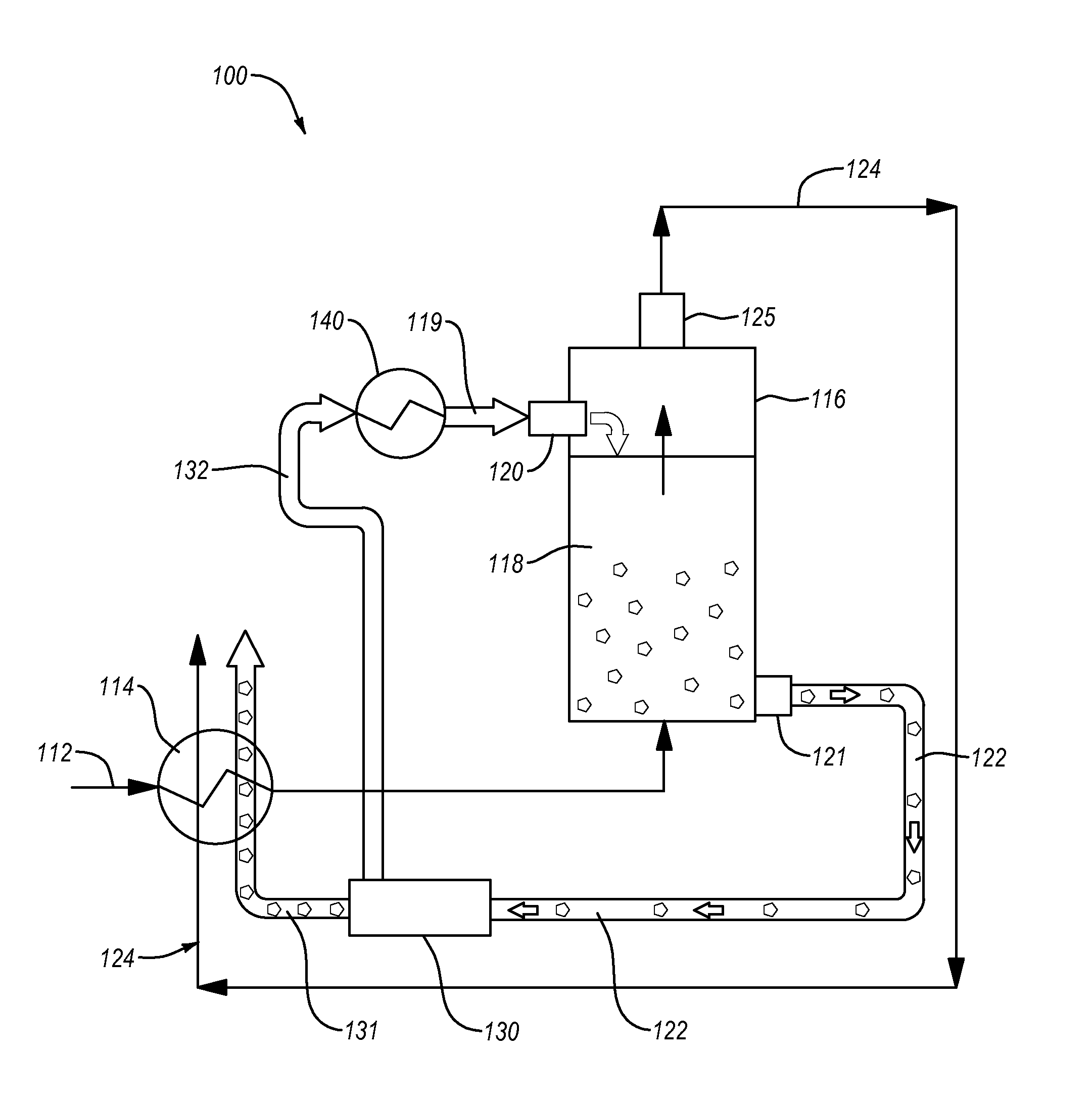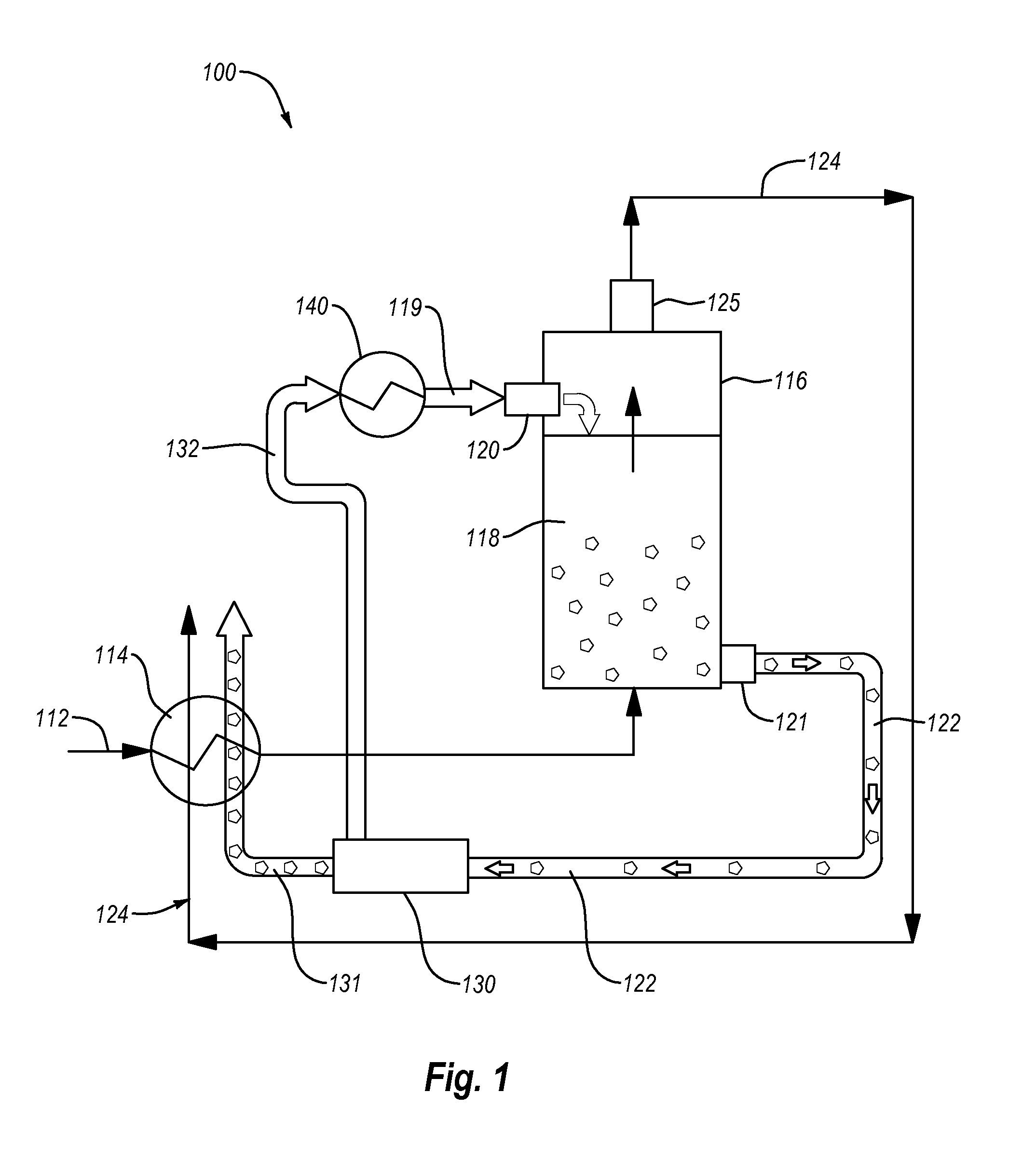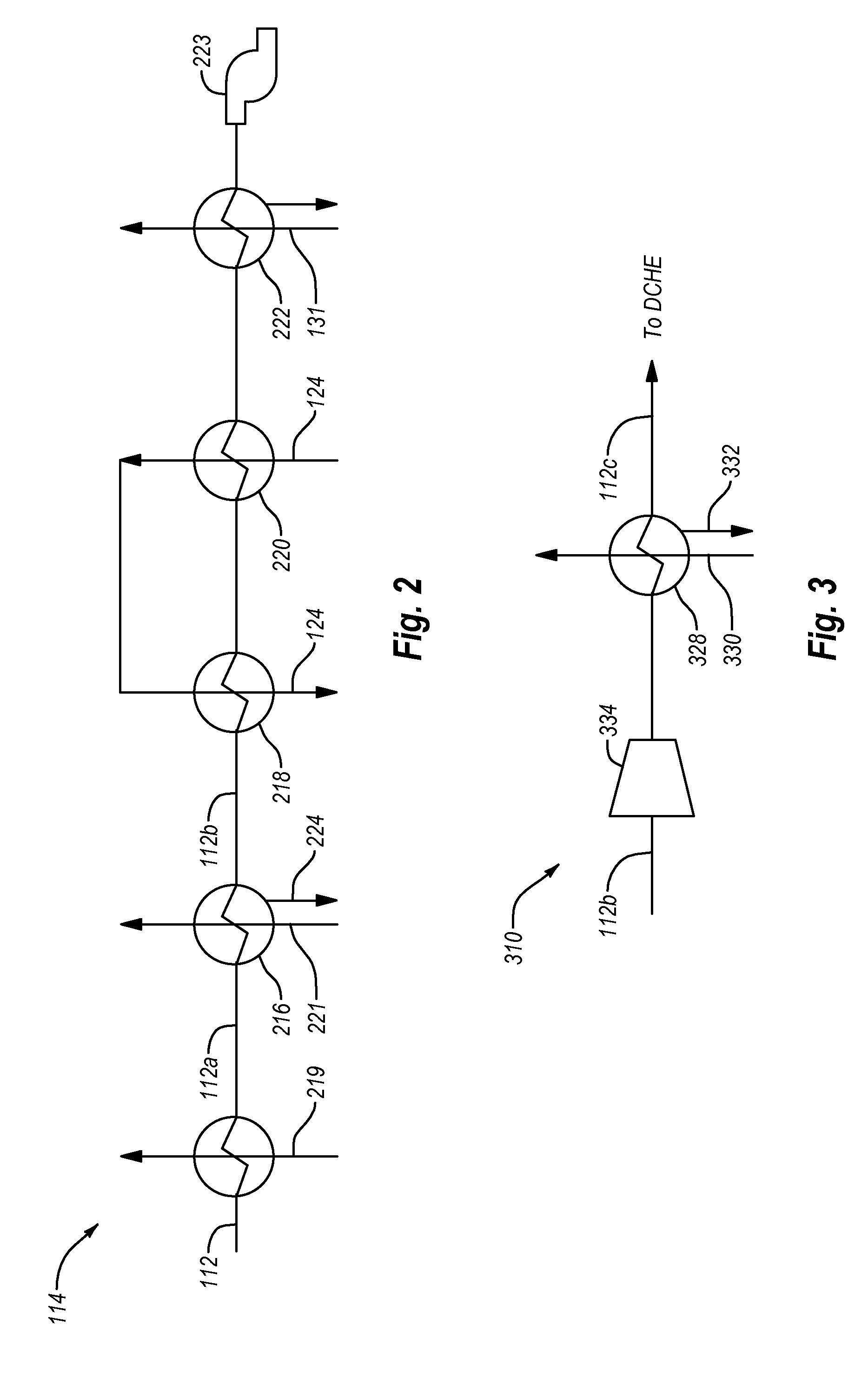Systems and methods for separating condensable vapors from gases by direct-contact heat exchange
a technology of condensable vapor and heat exchange, which is applied in the direction of separation process, lighting and heating apparatus, heating types, etc., can solve the problems of inability to adopt utility-scale, unacceptable decrease in the total efficiency of the power plant, etc., and achieve the effect of facilitating the separation of solid co2 particles
- Summary
- Abstract
- Description
- Claims
- Application Information
AI Technical Summary
Benefits of technology
Problems solved by technology
Method used
Image
Examples
Embodiment Construction
[0035]The systems and methods disclosed herein relate to separating condensable vapors from a process stream (e.g., the flue gas from a power plant) to form a solid and a separated light-gas stream. For example, in one embodiment, the methods and systems relate to condensing carbon dioxide vapors from a process stream that includes carbon dioxide and nitrogen. The systems and methods of the invention can be used to separate condensable vapors in any process stream that includes a mixture of gases, some of which can be readily caused to change phase. The process stream is typically produced in a hydrocarbon processing plant or sometimes in CO2 sensitive air supplies for life support. Examples of hydrocarbon processing plants and breathing air supply systems that produce a stream suitable for use in the present invention include, but are not limited to coal fired power plants, natural gas fired power plants, fuel oil fired power plants, biomass fired power plants, petrochemical proces...
PUM
| Property | Measurement | Unit |
|---|---|---|
| pressure | aaaaa | aaaaa |
| pressure | aaaaa | aaaaa |
| desublimation temperature | aaaaa | aaaaa |
Abstract
Description
Claims
Application Information
 Login to View More
Login to View More - R&D
- Intellectual Property
- Life Sciences
- Materials
- Tech Scout
- Unparalleled Data Quality
- Higher Quality Content
- 60% Fewer Hallucinations
Browse by: Latest US Patents, China's latest patents, Technical Efficacy Thesaurus, Application Domain, Technology Topic, Popular Technical Reports.
© 2025 PatSnap. All rights reserved.Legal|Privacy policy|Modern Slavery Act Transparency Statement|Sitemap|About US| Contact US: help@patsnap.com



